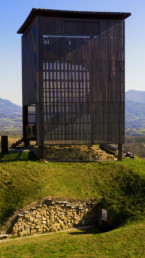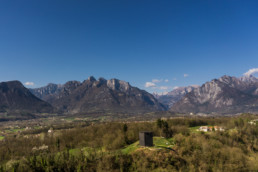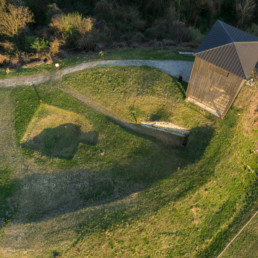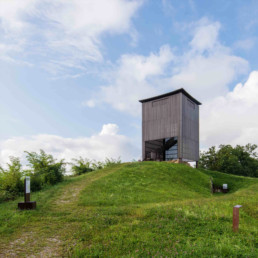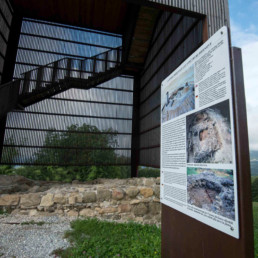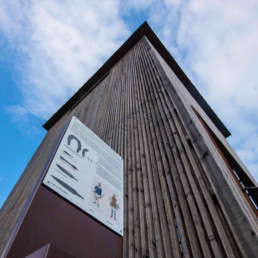Noàl
The lookout of Val Belluna
It has been there for 3,300 years, little witness of the age of large European archaeological sites. Visiting the ancient area of Noàl, which is now an Archaeological Park, means rewinding time and going back to the Bronze Age, the Iron Age, and the Middle Ages. Noàl is a place of evocative beauty, located between the Piave and Cordevole rivers. It has witnessed the succession of peoples and metallurgic innovations, empires and warrior bishops. Today, thanks to a long work of research and rediscovery, Noàl archaeological park can offer you the mystery and energy of millennia of history and legends: just close your eyes and imagine the first blacksmiths at work, medieval music and songs.
3300
Three thousand three hundred years of history, through destruction and revivals
Research states that the first settlements in Noàl date back to the 13th and 12th centuries B.C. Later on, an actual fortified village, or castelliere, with a remarkable socio-economic organization developed from the original nucleus. In the Iron Age, the castelliere rose again becoming even more imposing, with palisades, a strong bank and a ditch. During the Roman period it was used only as a guard post, while in the Middle Ages the castelliere turned into an actual castle, with a strategic function of military control and communication through visual and acoustic devices. Its full development took place between the 10th and the 12th century: the remains of the walls of the ancient tower are still visible today.
For further information: Noàl di Sedico – Belluno, da castelliere preromano a sito fortificato medievale. Leggenda, storia, archeologia, valorizzazione, (Noàl di Sedico – Belluno, from pre-Roman castelliere to medieval fortified site. Legend, history, archaeology, enhancement), by Elodia Bianchin, Francesco Cozza, Gianni De Vecchi, Municipality of Sedico, 2014.
Ages
From Castelliere to Castle
Mirabèi fortified site in Noàl, from 1300 B.C. to 1196 A.D.
The Bronze Age Castelliere
The first defensive structures date back to the period between the 13th and the 12th centuries B.C: they were structures with various orders of palisades, wooden gabions (filled with stone debris and soil) and a terreplein (bank “C”) to defend small housings and workshops (metallurgic activities, manufacturing of ceramic artefacts, etc.).
It was the castelliere…
The Iron Age Castelliere
Between the 9th and the 8th centuries B.C. Noàl castelliere was rebuilt even stronger by further raising the terreplein which reached monumental dimensions and was visible from far away. In order to counter the terreplein thrust, some buttresses were built on the inside, and next to them there were some small buildins…
Medieval castle
The first tall fortified wooden structure in the historic age (a tower) should date back to the Goths (6th century). But the first important defensive structure dates back to later periods: it was made up of a tower of stones bound with mortar and a terreplein made of palisades and large stones. This was the first structure to be called “castle” (of Mirabèi, Mirabello)….
The place
The routes
The archaeological route. In order to experience Noàl history, inside the Park there is an educational route equipped with panels giving information on the history of the place, the research, the finds and also indicating the layers of the various ages of the castelliere/castle.
On the top of the tower, with a 360° view over the valley and the peaks of Dolomiti Bellunesi Park, there is the classroom equipped with display cabinets containing perfect replicas of the finds, explanatory panels and panoramic panels to sight and spot the ancient network of castles, protohistoric settlements, watchtowers, the main peaks of the surrounding mountains, towns and villages, the Piave and Cordevole rivers.
Excursions (we suggest wearing comfortable shoes).
1) In Landris, about 1 Km north of Sedico, when agordina regional road begins climbing towards Roe Alte, a large signboard marks the beginning of the path which leads to Noàl park in about half an hour, along a path and a little secondary road.
2) Immediately north of Sedico, before the roundabout, a road sign shows the beginning of Mirabèi street and of the route which leads to Noàl park in about 20 minutes.
By joining the two routes you can walk around an interesting circular path.





